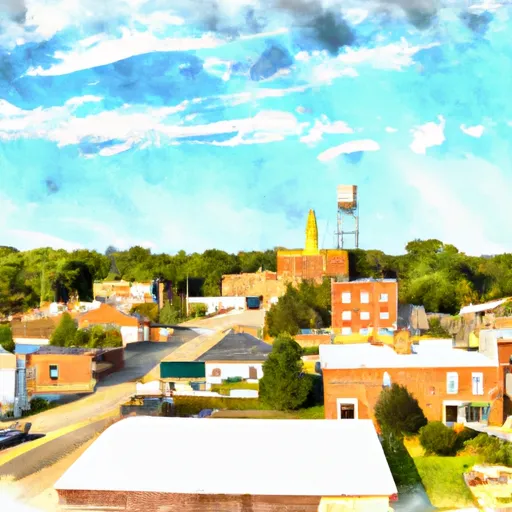°F
°F
mph
Windspeed
%
Humidity











Skidmore is a small town located in Nodaway County, Missouri. The climate in Skidmore is classified as a humid continental climate, characterized by hot summers and cold winters. The average high temperature in summer reaches around 87°F (30.5°C), while in winter, it drops to approximately 39°F (3.9°C). Skidmore experiences moderate precipitation throughout the year, with an average annual rainfall of 40 inches (101.6 cm) and occasional snowfall in winter.
Hydrologically, Skidmore benefits from its proximity to the Nodaway River, which flows through the town. This river serves as a source of freshwater for various recreational activities and offers opportunities for fishing, boating, and kayaking. The river also attracts wildlife, making it a popular spot for birdwatching and nature enthusiasts.
In terms of outdoor recreation opportunities, Skidmore is surrounded by beautiful natural landscapes, including several parks and recreational areas. For example, the Nodaway County State Wildlife Management Area is nearby, providing opportunities for hiking, camping, and hunting. The area also offers opportunities for wildlife viewing, with deer, turkey, and various bird species being common sights.
Overall, Skidmore, Missouri offers a pleasant climate, access to freshwater resources, and various outdoor recreational activities, making it an attractive destination for nature lovers and outdoor enthusiasts.
Weather Forecast
Skidmore receives approximately 888mm of rain per year, with humidity levels near 84% and air temperatures averaging around 11°C. Skidmore has a plant hardyness factor of 5, meaning plants and agriculture in this region thrive during a short period during spring and early summer. Most plants will die off during the colder winter months.
Regional Streamflow Levels
83
Cubic Feet Per Second
55
Cubic Feet Per Second
29,100
Cubic Feet Per Second
149
Cubic Feet Per Second
Nearby Camping
| Camping Area | Reservations | Toilets | Showers |
|---|---|---|---|
| Cocklin Fish Farm | |||
| Lake Garnett City Park | |||
| John Brown Memorial Park | |||
| Pilot Grove Co Park | |||
| Osawatomie City Lake | |||
| Hacklebarney Woods County Park |



